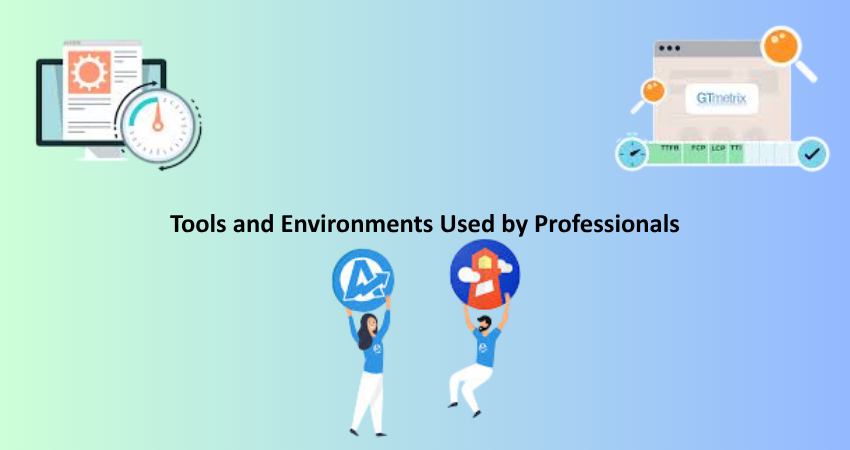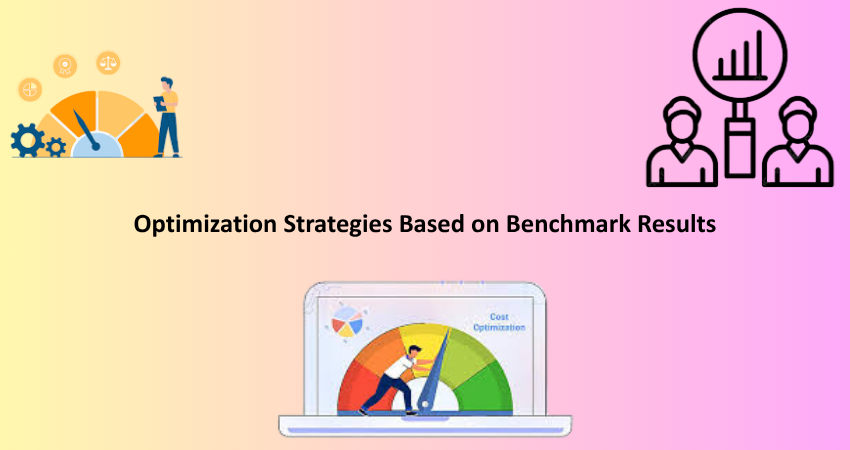
Introduction
Website speed is becoming a necessity and not a luxury in the contemporary digital scenery. Whether you run an e-commerce store, a blog, or provide online services, the performance delivered by your website has a direct impact on user experience, search ranking, and, in the end, conversion rates. Users expect websites to load in seconds, while search engines like Google have already introduced page speed as a key ranking factor. So performance tuning becomes one of the most essential tasks in any web development workflow.
Professional developers know that for developing websites that are fast and high in performance, they must benchmark. Website speed benchmarking is measuring speed against a set of key metrics through national standardized tools and procedures. Such benchmarkers would enable a developer to identify bottlenecks, optimize assets, and experience consistency across devices and networks. Unlike casual assessments, professional benchmarking involves precise environments of testing, repeatable workflows, and in-depth analysis on the data gathered. This is an introduction to how an expert developer benchmarks the speed of a website and the tools they use and techniques that get that blazing speed web experience.
Understanding the Fundamentals of Website Speed
Why Website Speed Matters in 2025
The passage of each year condenses the patience of users for delayed websites to an inch. According to calculations, it will exceed all previous expectations in the year 2025 by the very advancement in the internet infrastructure and mobile technology. Such websites will not only suffer from the slowdown with failure to load fast, but it would also lead to a loss in traffic, conversions, and customer loyalty. Even a delay of a couple of seconds would mean significant bounce rates with lesser session durations. This aspect becomes fundamentally important to an online business, along with compression of dollars as lost revenues. In certain domains such as e-commerce or online publishing, websites do have impressive competition since alternatives do exist at the click of a mouse. Therefore, performance makes the difference.
Site Velocity also affects accessibility and should be a matter of inclusion. High-speed internet and the latest gadgets do not reach all users. If a website is designed only for high-performance environments, it might omit users from rural areas or developing regions. Professional developers account for this by making sure their websites are efficient, even under constraint conditions. By putting into place all performance measures, developers not only improve the user experience but also support overall goals such as digital equity and global accessibility.
Key Metrics That Define Website Performance
The website speed measurement is not only concerned with how quickly a home page opens but also considers a full plethora of metrics that measure real user experiences. Some of the most popular metrics today include First Contentful Paint (FCP), Largest Contentful Paint (LCP), Time to Interactive (TTI), and Cumulative Layout Shift (CLS). Each of these metrics is specific to a particular aspect of the loading process. For example, FCP measures the time until the first content is displayed, LCP, until the largest piece of content is displayed. Meanwhile, TTI measures the time until the browser becomes sufficiently interactive: and CLS measures the shifts in layout considered unexpected by the user during a page load.
Professional developers monitor such metrics by making comparisons between data from both lab and field studies. Lab data collected can be referred to as controlled testing environments simulating different devices and networks and repeated and comparative testing. Field data, in contrast, is based on actual user experiences, helping developers to know the performance of their site in the wild. Together these two worlds offer a complete picture about performance. Developers use the Core Web Vitals as their starting point before proceeding for technical audits which will take them to more granular levels of results. This understanding is the first part of the metrics and thus is the first step of successful benchmarking.
Tools and Environments Used by Professionals

Lab Testing Tools: Lighthouse, WebPageTest, and GTmetrix
Professional software developers would normally go for lab-based performance benchmarking tools that produce controlled, consistent, and reproducible performance benchmarks for their tasks. Among the most popular are Google’s Lighthouse, which is built right into Chrome DevTools. The tools decide everything from performance scores to accessibility, SEO, and best practices. The scoring system allows developers to quickly become aware of the health of a given page while in-depth audits will help identify improvement opportunities. Its open-source nature allows developers to integrate it into any automated testing environment for continuous monitoring.
Another equally important instrument is the WebPageTest. This piece of software provides for detailed control of all the testing parameters: location, browser type, connection speed, and device emulation. Developers can run multi-step tests, analyze videos of page-loads, and work with waterfall charts plotting resource loading, just about anything that they want to accomplish. GTmetrix unites the Lighthouse and WebPageTest worlds, providing visual reports and recommendations that can be put to use right away. These tools are indispensable to the professional benchmarking toolbox, equipping developers with the means to simulate the real-world, which is directly tied to how every element affects performance.
Field Testing Tools: Google Search Console and Chrome UX Report
Lab tools are helpful, but they can never simulate real-world conditions. To capture them, you would need field data, and that’s what Google Search Console reports do: giving you indications about user visits-alongside like Core Web Vitals-actual performance reports. All these insights leverage the Chrome User Experience Report (CrUX): an open-source dataset that captures performance data from real users over millions of websites. This field data helps with understanding the site performance with various network conditions, locations, and devices.
CrUX data is very widely utilized by professional developers for comparing their lab findings and setting strategies according to them. For example, one site may perform beautifully on a bench test but convert poorly in the field. This indicates server latency problems or issues with third-party scripts that need to be addressed. PageSpeed Insights is one tool that combines lab and field data to provide an overall picture of performance. These reports can be used by developers to map out performance over time, identify trends, and ensure that optimizations translate into real-world improvements. Field testing has no choice but to be the need in performance-centric development workflows.
Benchmarking Workflow and Best Practices
Creating a Controlled Benchmarking Environment
First among the few steps in any professional benchmarking is the establishment of the control environment for testing. This guarantees tests’ consistency and helps distinguish between changes due to the optimizations and everything else. The developers usually select a baseline URL, such as the homepage or some other frequently visited landing page. In the process of testing, the third party scripts not needed are disabled, the server is kept in stable condition, and throttled connections are employed in order to simulate various user experiences.
The states of cache are observed with great rigor. Cold cache testing simulates the experience of a first-time visitor, while warm cache gives representation to a returning user. They both yield information beneficial to development. Some developers may use Docker for containerized environments to standardize their benchmarking installations, while others may rely on CI/CD pipelines to automate performance testing with every code push. Version control, along with documentation, comes next. Developers need to log every change together with its test result so that over time, they can track improvements and regressions. This underlying discipline is critical because it preserves reliability, reproducibility, and actionability in the benchmarks undertaken.
Comparing Results and Setting Performance Budgets
There is more to benchmarking than mere measurement. It’s a way to set targets. One of the well-known methods in use today is setting performance budgets. A performance budget lays out the upper limits for the metrics falling in LCP, CLS, total page size, etc. When budgets are traversed, the developers are warned and can rectify the situation before performance deterioration continues. Performance budgets lend themselves to automated building processes and become part of the quality assurance process.
The setting and measuring of results across pages or iterations help developers understand the design and engineering decisions’ consequences. For example, while the introduction of a high-resolution hero image may improve aesthetics, it could simultaneously adversely affect LCP. The optimization thus allows teams to make trade-offs. Developers also look at historical records to analyze trends. Are third-party scripts becoming bigger over time? Is interactivity slow with new features? These patterns are uncovered by benchmarking and help in building a roadmap for decision-making. Tracking performance becomes a metric, and when a metric is being watched, it gains as much value as uptime or error rates. In doing so, it gets an elevated status within the development process.
Optimization Strategies Based on Benchmark Results

Minimizing Render-Blocking Resources and Code Splitting
After a benchmark has indicated areas for improvement, developers usually go to work targeting the sources for optimization. In the main, one of the frequent culprits is render-blocking resources-scripts and styles that delay the rendering of the page. They tackle that by deferring non critical JavaScript using async and defer, and inline critical CSS. All those changes shorten the time for the browser to show visible content, implying improved metrics on FCP and LCP pages. Also, developers can create smaller JavaScript chunks with code splitting, which load only when needed to reduce the initial payload.
Advanced tools such as Webpack and Rollup help to manage these assets properly. Lazy loading is usually the next important technique, especially with images and videos. This makes the difference in obtaining all the above benefits by loading only the ones visible in the viewport and the rest deferred to load later, consequently decreasing initial load times in much greater proportions. These not only improve lab metrics but also improve the experience of real users, especially on mobile networks, and benchmarking drives optimization by showing where and how the most significant performance gains can be made.
Leveraging CDNs, Caching, and Server-Side Optimizations
Just like front-end optimizations, back-end and infrastructure optimizations help to enhance speed. Developers utilize CDNs, or Content Delivery Networks, to fetch a portion of static assets nearer to the user. This diminishes latency and makes sure load times remain decent in all global locales. Caching, if properly configured at the server and client level, would allow lightning-fast repeat visits. Tools for developers include HTTP caching headers, service workers, and cache control policy.
Server response should be kept in mind as well. Server-side rendering can be implemented by developers for dynamic content, and static site generators are an option with hard-speed performances. Along with this, performance can be improved with efficient database queries, compression such as Brotli or GZIP, and use of protocols like HTTP/2 or HTTP/3. Benchmarking is also used to analyze how well any of these will assist the server-side solution. TTFB (Time to First Byte), for example, is a metric that assesses server response time and indicates how well the server optimization works or does not work. Through front-end and back-end strategies, practitioners are creating a comprehensive performance solution.
Conclusion
Measuring website speed is a complicated process, and it is multifaceted, all good levels above simply loading-time. Professional software developers attach the same weight of seriousness to performance as they do to security, functionality, and usability aspects. Using a blend of lab and field tools, standardized workflows, and an approach that relies much more on data, they ensure that their websites not only look great but also perform excellently at all user environments.
But nowadays, when an elapsed time of only a few milliseconds can convert fortunes to loss or vice-versa, knowing one’s performance benchmarking is essential. Every last issue needs as much time to include consideration as decisions about test environments, assessment of Core Web Vitals, establishing a performance budget, or the actual implementations of point-specific optimizations. The web is becoming more complex, expecting more from the users, and the only one who will really make it will be the one who makes speed the first priority. Learning how to benchmark and improve website speed is a skill that will always pay off for novice developers and seasoned pros alike in terms of user satisfaction, search visibility, and business outcomes.